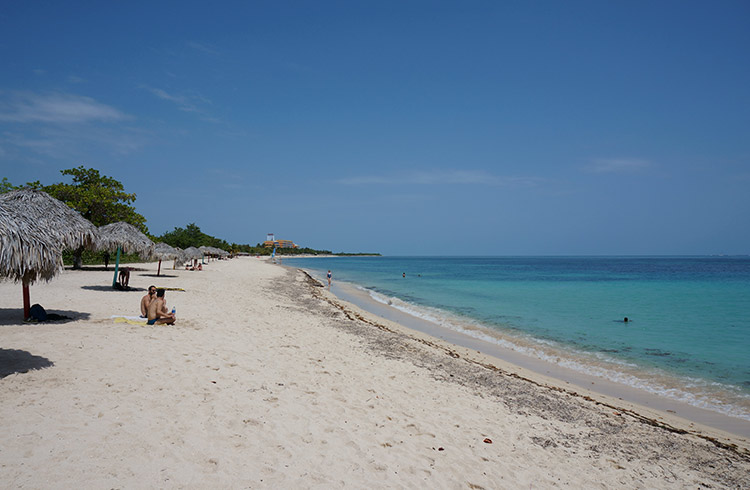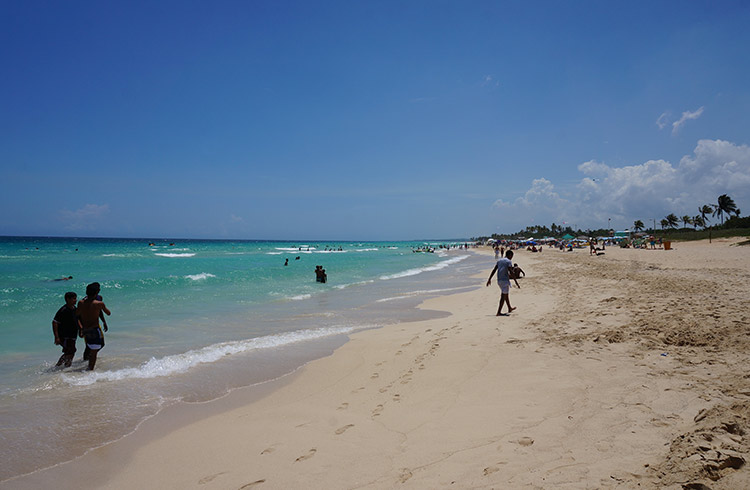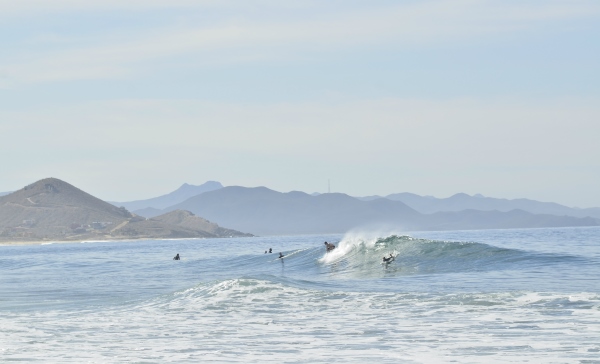Cuba may not be Indonesia or Hawaii when it comes to surfing, but with over 3,500 miles of largely undeveloped coastline, it's bursting onto the scene as a new wave-riding destination. Get tips on where to go and how to stay safe.
 Photo © Goats on the Road
Photo © Goats on the Road
Cuba’s surfing scene is finally starting to catch on. Not long ago, police were arresting Cuban surfers because they were convinced that they were trying to escape from the island. Today, there is a significant amount of kitesurfing and a growing surf culture. With decent waves, friendly people and a laid-back Caribbean vibe, the pearl of the Greater Antilles might just be the perfect place to hit the coast.
When to go surfing in Cuba
Cuba enjoys a tropical climate year-round with north-easterly trade winds constantly blasting the shoreline, and a balmy average temperature of 21ºC (69.8°F).
While rain hits between May and October, the skies clear from November to April.
The only real time to surf in Cuba is in winter – from November to April – when the Atlantic groundswell comes in from the north-east, producing some decent barrels.
Cuba sits in the hurricane corridor in the Gulf of Mexico, so the island can be hit by crazy storms. It’s not recommended to be on the water during strong weather from June to November, and it’s important to be aware of all hurricane warnings.
If there’s a storm in the Gulf of Mexico, it can mean great waves for surfing in Cuba – but stay away from the coast if the hurricane is heading towards the island itself.
In particular, September and October have the highest chance of serious storms.
Cuba's top surf spots
Now you know when to visit Cuba for great surfing, it’s time to plan the perfect surf locations. Here are the top surf spots on the island.
Yumuri
Known as one of the best surfing spots in Cuba, this river-mouth surf bay is located just 18.6mi (30km) east of Baracoa.
A mostly pebble-stone beach, Yumuri has pretty decent waves breaking both left and right depending on the current swell.
La Setenta
Known to have waves up to eight feet high during strong northeast Atlantic groundswells, this shallow rock reef is not far from the old center of Havana (which means it can sometimes get crowded).
Like many places on the north shore, the best time to hit the waves here is when there’s a massive storm in the Gulf of Mexico, sending the surf crashing on the Caribbean islands.
There’s a shallow table reef here with some pretty jagged rocks, so it’s important not to head out at low tide.
Because of the underwater topography, access to the surf can be difficult from the coastline, but there’s a random concrete slab sticking out into the ocean where many people find easier entry.
Playas del Este
Mostly known for great kitesurfing, Playas del Este near Havana also attracts the odd bodysurfer and surfer.
This beach runs for 15mi (24km) along the northern coast. There are few facilities here and you really have to wait for a groundswell or a storm further north to enjoy proper waves.
But if you’re into strapping on a kite, Havana Kiteboarding have a surf shop in Playas del Este where you can rent and organize lessons.

Calle 70
This is Havana’s main break, and it’s not a safe one, so be careful.
The waves are okay here, but they crash over a razor-sharp reef dotted with sea urchins and stone fish, so most serious falls here are known to leave the surfer cut and bloody.
You can do lessons on this break, but there are better places in the country for beginners.
Other locations worth mentioning
Baconao: Along the south coast of the national park there are some good surfing opportunities.
Sun Beach: There’s an average beach break here with decent and easy waves good for all surfers. There are some lifeguards here, who tend to shut the beach down if the waves get too big.
Cabo de San Antonio: Also known to have adequate surfing during storms in the Gulf. If the waves are too tame, head to the Parque Nacional Península de Guanahacabibes at the tip of the peninsula for some crocodile spotting and cenote swimming.
Dangers and safety tips
Cuba still hasn’t fully caught on to surfing culture yet, so you may find that etiquette on the waves hasn’t quite evolved. Be on the defensive side and be vocal.
There are no lifeguards on many of the beaches listed above, so try to be extra careful and be aware of sharp corals, jagged rocks, and some hard tabletop formations in places like La Setenta and Calle 70.
Cuban policies, combined with the American blockade, have made surfing in Cuba a pretty complicated endeavor, especially for locals who have a hard time getting their hands on boards, wax, and other essentials for the sport.
While there are some places to rent gear, it’s best to bring your own from home if you can.
Sometimes if you stay in casa particulars near popular surf towns, you can find wax that other surf travelers have left behind. The owners can sometimes help you with surf tips and locations too.
Related articles
Simple and flexible travel insurance
You can buy at home or while traveling, and claim online from anywhere in the world. With 150+ adventure activities covered and 24/7 emergency assistance.
Get a quote


No Comments